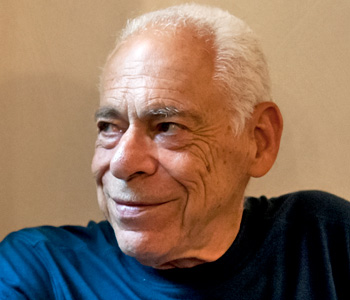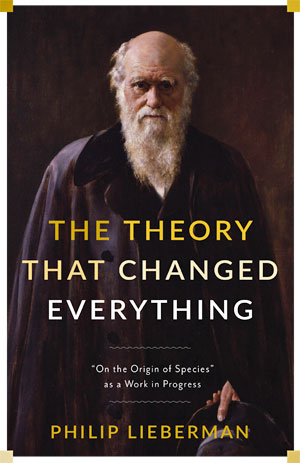
Charles Darwin’s 1859 book, On the Origin of Species, is often cited but hardly ever read. My book presents the observations and the concepts that he actually proposed because they continue to guide research in the twenty-first century; and suggest how we should deal with issues of general concern.
Darwin’s explanation of Natural Selection, the key mechanism of his theory, cannot be improved on. Darwin wrote:
“[A]ny variation, however slight, and from whatever cause proceeding, if it be in any degree profitable to an individual of any species, in its infinitely complex relations to other organic beings and to its physical conditions of life, will tend to the preservation of that individual, and will generally by inherited by its offspring. The offspring, also, will thus have a better chance of surviving […]. I have called this principle, by which each small variation, if useful, is preserved, by the term Natural Selection. (On the Origin of Species, p. 61)
Darwin thought that Natural Selection acted slowly. The facts that demonstrate that it can act rapidly were not then known. However, he knew that abrupt transitions had occurred. His solution was “recycling”: an organ that had evolved for one purpose could be modified to serve a new end. Swim-bladders that allowed fish to hover had turned into lungs. Current studies show that brain mechanisms that evolved for motor control now enhance human cognition and language. Neural structures involved in the early stages of vision play a part in recalling memories.
Darwin borrowed from his grandfather Erasmus the premise that the development of an organism could provide insights on its evolution—the basis for current “Evo-Devo” studies. Although the role of genes was then buried in an obscure journal and DNA was discovered a century later, Darwin proposed that the environment could directly produce heritable effects. “Epigenetic” DNA that does not specify genes, govern the processes that yield brains and bodies. These processes explain why we don’t look like or generally act like chimpanzees though we share almost 99% of our genes. Some epigenetic processes are directly affected by environmental factors; your grandmother’s diet can lower your lifespan by 30 years.
The opening scenes of documentaries showing lions tearing apart their prey have little to do with Darwin’s “struggle for existence.” He devoted chapters to describe how different species profitably interact to enhance survival. Darwin stressed the interplay between ecosystems and biological evolution as well as the unintended consequences of human intervention. And he was one of the first practitioners of the modern “scientific method”—running experiments to confirm, modify, or reject a theory. His pigeon breeding experiment showed that “fancy” pigeons, thought to be distinct species, had descended from the common rock pigeons you see on city streets.
Darwin’s theory will become clear in examples drawn from his work, On the Origin of Species, what’s on the shelves of your supermarket, and current research including my own. And there will no need to google to decipher jargon.
I was walking down a hall at MIT when I heard an odd sound: two graduate students in Ken Stevens’ laboratory had programed a computer to synthesize a whale belching. Stevens’ research centered on human speech production and computers that could be programmed to produce speech. It was an element of this research program that has produced the now ubiquitous “speech assistants” on smartphones, computers, cars etc. I joined that research program, which soon led to my focusing on the evolution of human speech, language and cognition; and to learning what Charles Darwin had proposed in 1859.
Darwin had noticed that the peculiar human supralaryngeal vocal tract (SVT) increases our risk of choking to death. In all other mammals and newborn humans the tongue rests almost entirely in the mouth and the larynx can lock into the nose. This anatomy yields two separate channels – one directing air into the lungs, and one that directs food to the digestive tract. It takes eight to ten years for children to gradually develop a fully adult-like SVT. The process involves reshaping the skull and tongue and lowering the tongue into the throat, which also gradually lengthens.
Stevens in 1972 answered Darwin’s query; his computer techniques showed that the peculiar human SVT allows us to produce “quantal” vowels (the vowels of the words see, do, and ma) that make speech clearer. It would be possible to talk without these vowels, but it would not be as effective a mean of vocal communication. Studies that are in progress show that mutations on epigenetic factors shaped the unique human SVT. Hence, Natural Selection, which retains even small variations that enhance survival, produced the human SVT.
About the same time, I and Edmund Crelin, who had published the first comprehensive anatomical study of newborn humans, showed that Neanderthals’ SVTs were similar to a large human newborn’s. Neanderthals could not produce Stevens’ quantal vowels. However, the archaeological record suggested that Neanderthals possessed language so as to be able to transmit their complex technology. And since talking, then as now, was the primary communication channel of language, we concluded that Neanderthals must have had had brains that allowed them to learn and execute the acrobatic tongue, lip, and jaw movements involved in talking.
Apes who have nonhuman SVTs also could talk, albeit with less clarity, if their brains were capable of learning to talk. Hence my research and other research groups have focused on understanding how brains work and how the human brain evolved. My book describes some of my own studies involving Parkinson disease, monitoring low oxygen levels on Mount Everest, and the genetic studies of the Max Planck Institute in Germany, which support the inference that Neanderthals possessed language and talked.
It’s becoming clear that the evolution of the human brain follows Darwinian principles: structures dating back to before the age of the dinosaurs have been recycled and modified by mutations on genes and epigenetic mechanisms. Stone tools, “hard” archaeological evidence, indicate that the evolution of the human brain involved the interaction of culture and biology. Similar interactions account for the evolution of adult lactose tolerance and being able to survive at extreme altitudes or arctic cold.

The first chapter, “Strawberries,” presents the formative experience: the voyage of HMS Beagle that formed Darwin’s views on the common humanity of all people and set the stage for his life’s work. In a similar, lesser manner, the treks on which my wife, Marcia, and I walked off the map into remote regions of Nepal, was time-travel that changed the way that we viewed life and focused our work.
The first pages of “Strawberries” demonstrate the mechanism and impact of Natural Selection. The strawberries on your plate are the result of natural selection practiced over hundreds of years; not God’s gift. GMOs are nothing new, suggesting, as noted in the concluding chapter of my book, that Darwin’s reaction to the debate on GMOs and other current issues would not be what many readers might expect. It puts Darwin’s experiences in the Galapagos islands into perspective. Darwin collected birds there but forgot to label where they had lived. An epiphany revealing the theory of evolution did not occur.
The chapter also presents examples revealing the process of Natural Selection and how it is tied to environment and culture. It shows why Darwin did not realize that Natural Selection can act rapidly. The germ theory of disease was then unknown and Darwin could not have realized that Natural Selection was acting in a savage manner to preserve people whose with robust immune systems or who were lucky to avoid infection. Marcia and I found that it still was unknown when we walked to Inner Dolpo, Nepal. Doctors in developed nations disputed the germ theory throughout most of the nineteenth century.
Pages 30 to 44 of Chapter Two, “No Cats, No Flowers “ present the other major elements of Darwinian evolutionary theory in text that avoids jargon. It also presents the theory in George Chambers’ 1844 Vestiges of the Natural History of Creation; a mixture of intelligent design and phrenology. Chambers’s theory, surprisingly, is at the heart of Noam Chomsky’s views concerning the evolution of language, morality, and art. Chomsky, like Chambers, views evolution as a process directed by some vague unspecified criterion. To Chomsky, Natural Selection is a meaningless concept; in his view, language suddenly came into being about 80,000 years ago through an unknown process that is unique to humans.

I hope that what Darwin actually proposed will sink into the consciousness of inquisitive readers, enhance support for evolutionary biology, and bring it to the attention of the next generation of potential scientists.
Darwin’s insights apply to matters of general interest, such as population growth and global warming; both crucial to our and the planet’s survival. My book might convince some people born into families holding to a literal interpretation of the bible to become open to other views, though they, most likely, would not read it. However, it might convince some linguists and psychologists to re-evaluate theories such as Chomsky’s to pursue more productive lines of inquiry.



Philip Lieberman was born in New York City in 1934. In high school he was a finalist in both national photography contests and the Westinghouse Science Talent Search. He selected science and has since published eight books and published or presented more than 200 papers. However, he kept up photography. He and his wife, Marcia have enjoyed walking on mountain paths since they were married, which in time brought them to Nepal and an interest in Tibetan culture documented in his photographs and her publications. Many of his photographs have been published and are in museum collections.